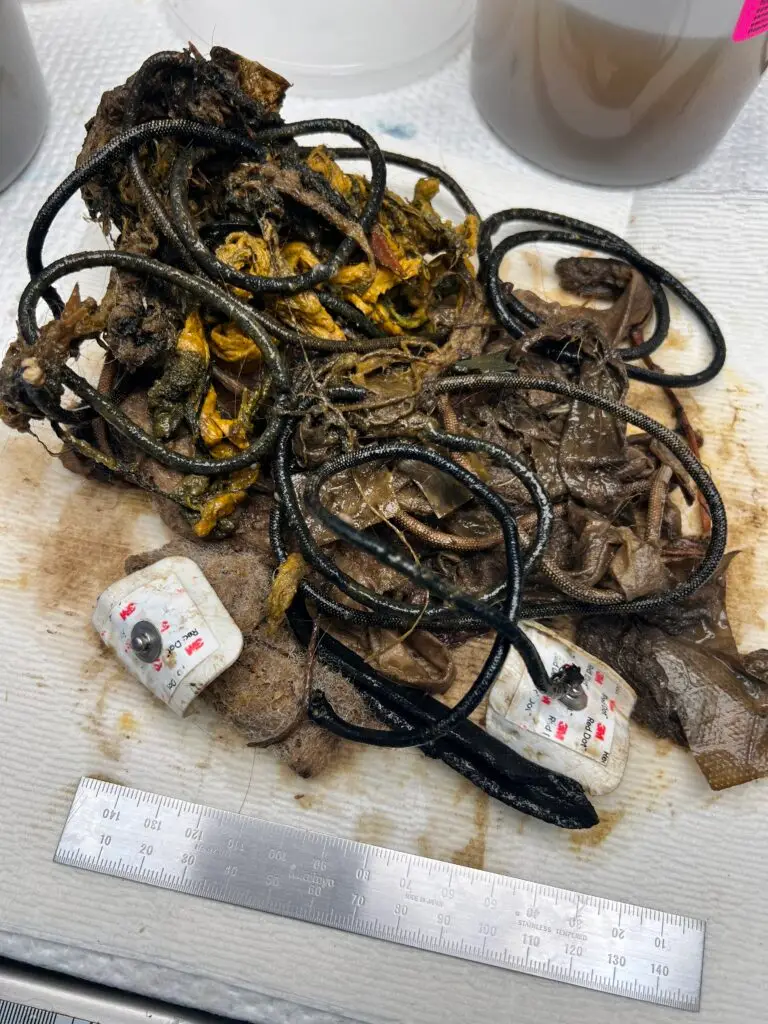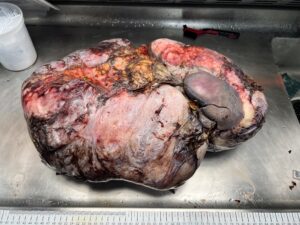Bezoars are a weird and intriguing medical phenomenon that has captured attention both in medicine and in folklore. These masses, which form in the gastrointestinal tract, can range from harmless to life-threatening. Let’s explore what bezoars are, what causes them, how they’re treated, and what happens to them after removal.
What is a bezoar?
First off, they do not come from goats (though, I suppose a goat could get one too) and they definitely won’t cure you if you get poisoned (R.I.P. Ron Weasley). A bezoar simply refers to a solid mass of indigestible material that accumulates in the stomach or intestines. While the term might conjure images of mythical objects with magical properties, in reality, a bezoar is a medical condition that can cause serious complications and even death if not treated.
Different Kinds Of Bezoars
Bezoars can form from various materials and are classified into types based on their composition:
- Phytobezoars: The most common type, formed from undigested plant fibers such as those in celery, pumpkin, or sunflower seed shells. High-fiber diets, especially when combined with inadequate chewing, increase the risk.
- Trichobezoars: Made of hair, these are more common in individuals with trichophagia (compulsive hair-eating), often associated with trichotillomania (hair-pulling disorder). Trichobezoars can become very large, sometimes extending into the intestines (Rapunzel syndrome).
- Lactobezoars: Found mainly in infants, these form from undigested milk or formula.
- Pharmacobezoars: Composed of undigested medications, such as extended-release tablets or poorly dissolving pills.
- A fifth type is composed of inedible everyday objects. Usually a result of behavioral disorders or conditions. This post was inspired by just such a bezoar. (see picture at bottom of post)
Risk Factors:
- Poor gastrointestinal motility (e.g., gastroparesis).
- Prior stomach surgery, such as gastric bypass.
- Conditions like diabetes or hypothyroidism that slow digestion.
- Behavioral conditions that involve eating non-food items (e.g., pica). Learn more about Pica here.
Symptoms of Bezoars
Symptoms may seem obvious but can vary depending on the size and location of the bezoar. They may include:
- Nausea and vomiting.
- Abdominal pain or discomfort.
- Loss of appetite or unintended weight loss.
- Bowel obstruction or perforation in severe cases.
What Happens to Bezoars After Removal?
This is where pathology comes in. Once removed, bezoars are typically sent to a laboratory as a “gross only” specimen for analysis to determine their composition and understand their cause. This helps tailor future dietary or behavioral recommendations to prevent recurrence. We do not submit anything for microscopic examination. The picture below is a specimen I received from a patient who was in a hospital be when they began ingesting everything in reach. It is composed of all kinds of things including (but not limited to) shoelaces, wires, hair, electrode pads, part of a bedsheet, an absorbent pad and some medical tape. (Wut?!)

In some cases, bezoars are preserved as medical curiosities, especially unusual or large ones. Trichobezoars and other rare types are often used in teaching hospitals to educate medical students about gastrointestinal conditions. However, most are simply discarded after analysis.




